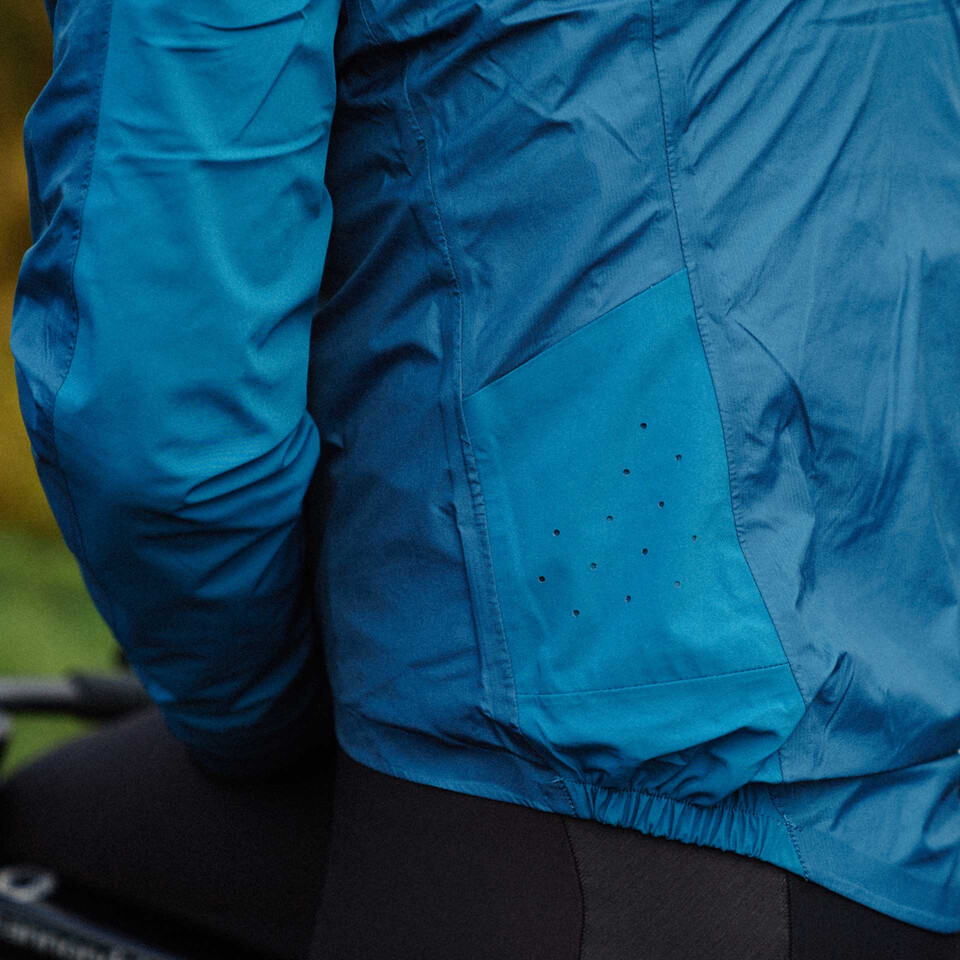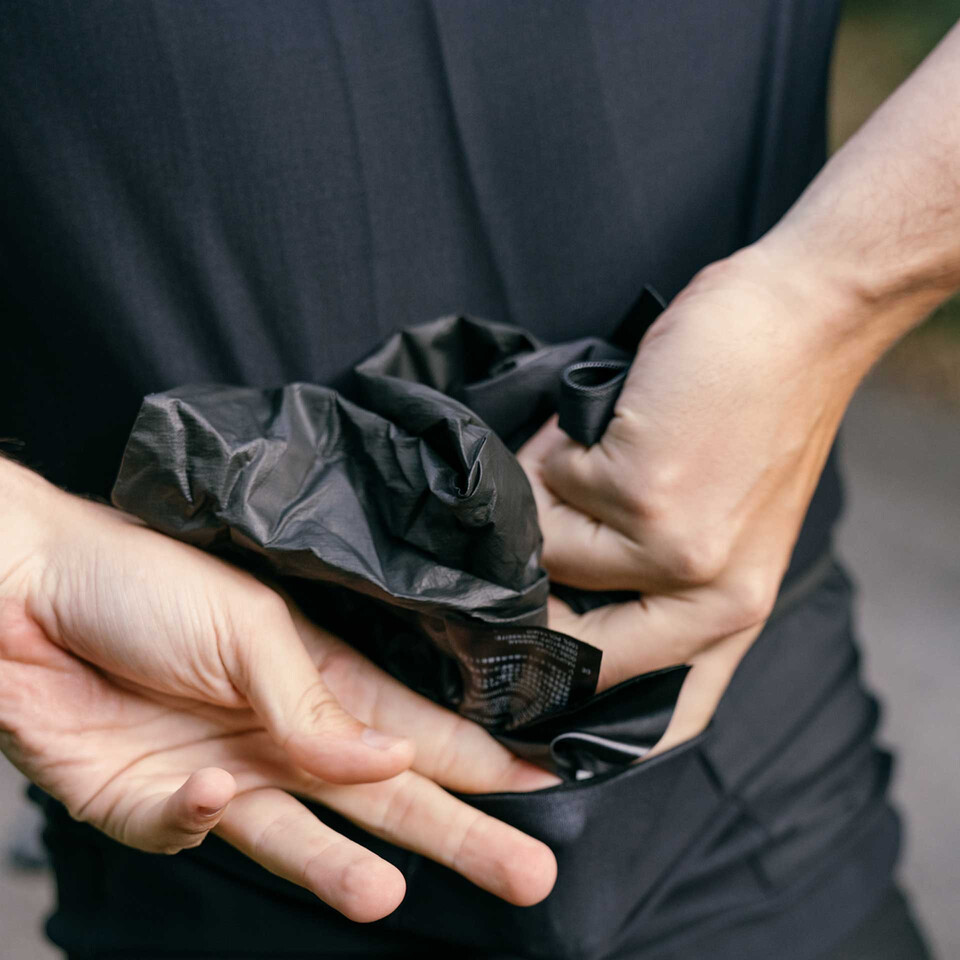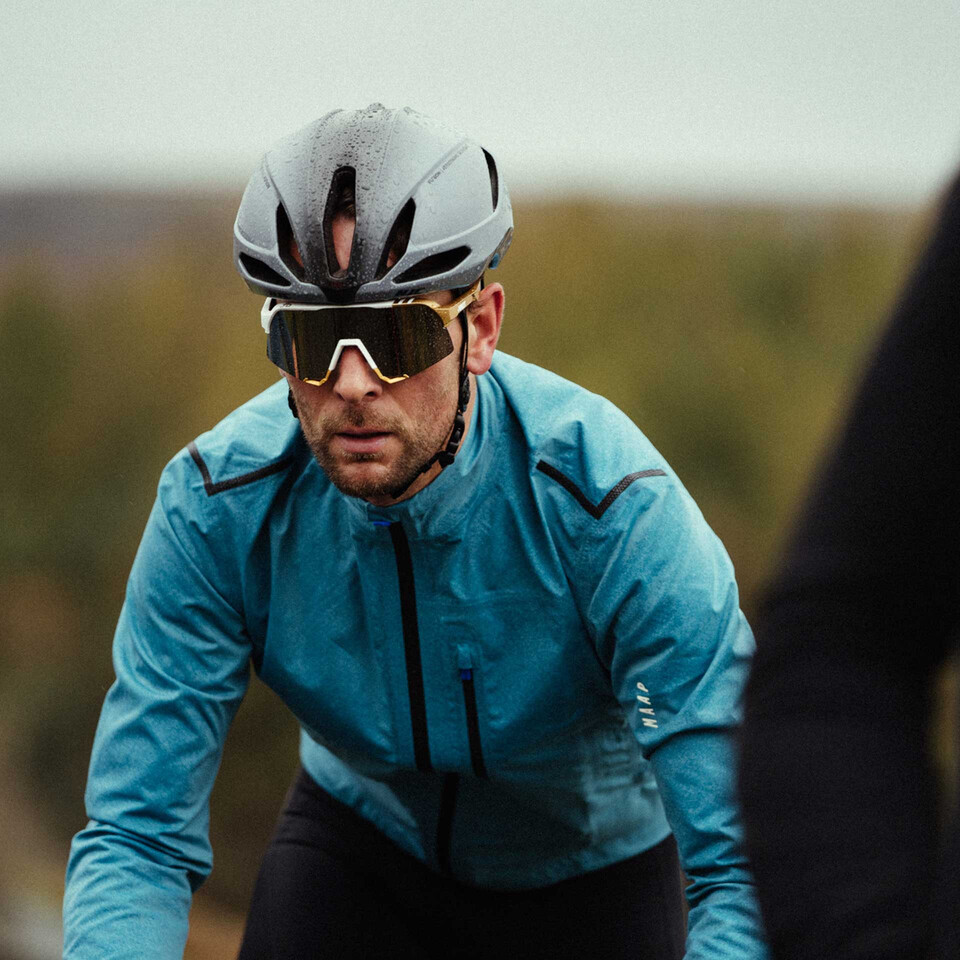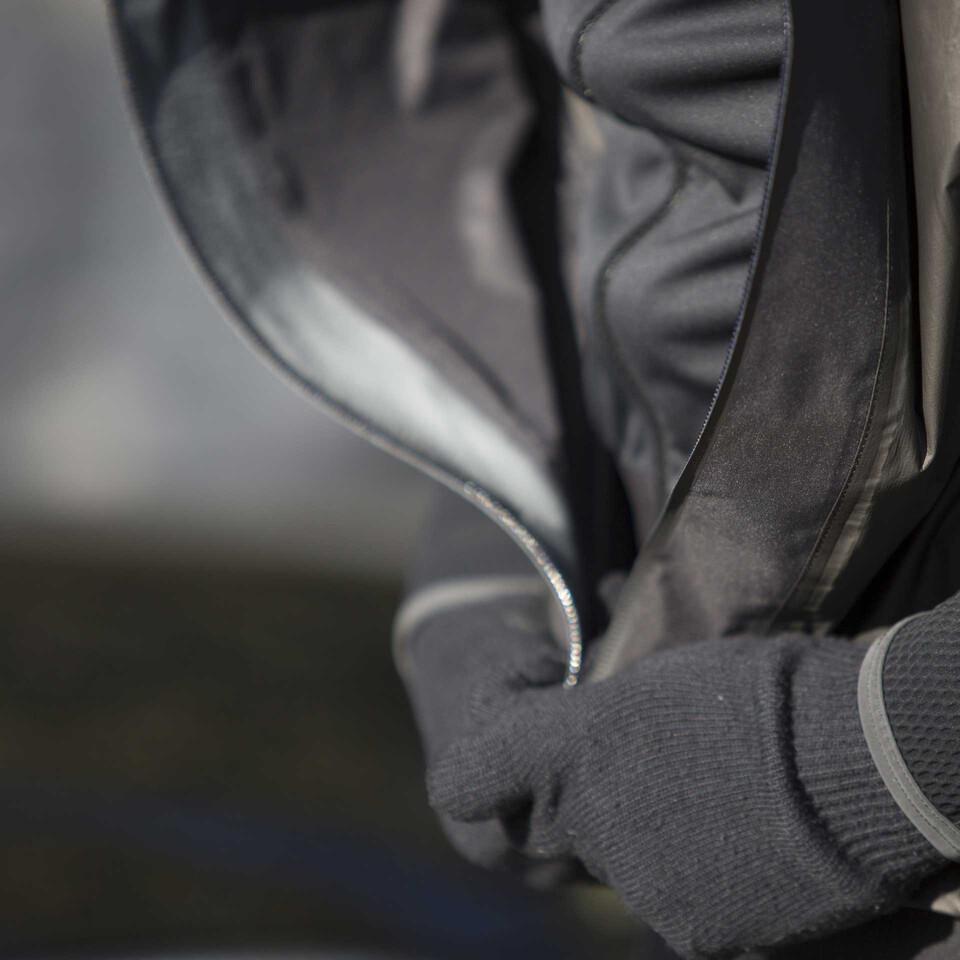
Waterproof Jackets
Cycling Clothing Guide
A good waterproof jacket is crucial to cycling comfort. That means a jacket that is not just a barrier against rain but one which fits neatly, packs down into a pocket or bag and is able to breathe well enough to cope with the exertions of a hard-working rider. Getting wet is the fastest way to get cold, even in quite mild weather, so if you are dedicated to training or commuting all year round then a great waterproof jacket is essential.

What should I look for when choosing a waterproof jacket?
The key consideration to bear in mind when looking at waterproof jackets is that making something totally waterproof is cheap and easy. Making something totally waterproof and breathable is somewhat trickier and more costly. Breathability is as crucial as waterproofness. Ultimately it is just as unpleasant to get wet from the inside as it is to get wet from the outside.
There are two measurements usually quoted by manufacturers in connection with their waterproof fabrics:
- Hydrostatic head in millimetres, which gives an idea of waterproofness and is measured by the height of the column of water that a piece of fabric can withstand before letting any through.
- MVT (Moisture Vapour Transmission) for breathability which is shown as g/m2/24hr, which is the amount of water vapour that can pass through a square meter of fabric over a 24 hour period.
A good rule of thumb is that 10,000mm and 10,000g/m2/24hr are probably the minimum levels needed in a waterproof cycling jacket, but more is definitely better.

What makes a jacket waterproof?
The two ways to make a jacket fully waterproof are to either use a PU (polyurethane) coating, which acts as an extreme DWR treatment, or use a PTFE (polytetrafluoroethylene) waterproof/breathable membrane with microscopic pores sandwiched between other fabrics. These billions of pores are too small to allow liquid water to pass through but large enough that water vapour can escape. The best known of these is the GORE-TEX stable of fabrics, but many other manufacturers now produce their own membrane materials which work along similar lines. In both instances, the seams of the jacket must be fully taped to seal the jacket completely.

PU products tend to be cheaper than membrane garments, and crucially don’t breathe as well, so whilst it is commonplace for less expensive walking style jackets, the extra breathability requirements of cyclists means that membranes are the favoured technology for good riding products.

Although it is the membrane which provides both the breathability and the waterproofing, the membrane itself is quite delicate, almost tissue paper-like, so needs protecting by additional materials on both sides, hence the term ‘3-layer’ fabric. Confusingly, 2-layer membrane fabrics also have three layers, but the inside layer is a separate drop liner rather than bonded to the membrane as it is in a 3-layer garment. 2-layer products are bulkier but cheaper than their 3-layer counterparts.

These extra layers have a huge effect on the performance of the garment, as any moisture has to pass through them as well as the membrane, so lighter, higher-quality fabrics allow the membrane to work better than heavier ones in terms of breathability, but of course, compromise durability. Not only do lighter, thinner jackets actually perform better in most circumstances, they can also be packed up into a pocket when not required, whereas heavier jackets will be too bulky.

The outer ‘face’ fabric will be treated with a DWR coating, to prevent the material from ‘wetting out’, which is when it becomes saturated with water. Should the DWR treatment wear off or the jacket become excessively dirty, the membrane can no longer perform at its best as the sodden fabric doesn’t allow water vapour to escape. In this instance, even if the membrane is preventing the rain from entering the jacket, the rider will quickly feel damp from their own sweat.

This is usually what has happened when someone thinks their jacket is leaking; in fact, it is often simply in need of a clean and reproof with DWR. This is why it is important for maximum performance to clean and maintain waterproof jackets in line with the manufacturer’s instructions for maximum performance.
There is no getting away from the fact that a worthwhile waterproof jacket is not cheap, but when you are 50km miles from home and the heavens open or you are committed to riding to work every day of the year, then the money will soon seem very well spent. The performance of modern jackets is light years away from the sweaty, flappy boil-in-the-bag rain capes of old, making wet weather rides more comfortable than ever.






